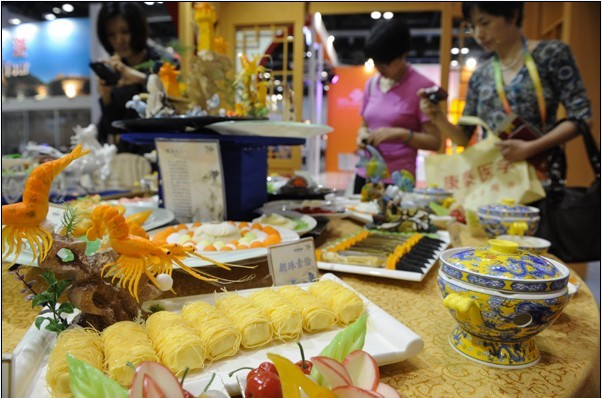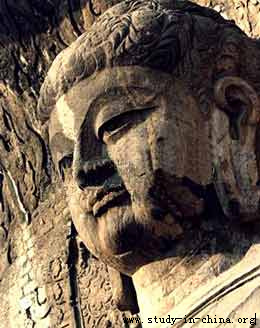| Home > China Feature |
Buddhist Temple in Central China Witnesses Historic Sino-Indian Cultural Synergy
As the cradle of China's Buddhism, Baima Temple in the central province of Henan has witnessed the commingling of Chinese and Indian cultures through the ages.
Located in the city of Luoyang, the Baima Temple, literally White Horse Temple, is considered to be China's first government-run temple.
A delegation of 200 Indian youths has visited the temple recently, as China and India have declared 2011 the "Year of China-India Exchange," during which each side will invite 500 youths from the other side for a visit.
"It left me a familiar impression," said Vinod Scultanpuri, 29, one of the delegates, pointing to a carved peacock around the pillar of an Indian style shrine in the temple. "This is our national bird."
With an area of about 3,450 square meters, the shrine, which was inaugurated by the Indian President Pratibha Patil on May 29, 2010, is India's first overseas shrine funded by its government.
Besides the Indian style shrine, other Chinese traditional Buddhism halls in the temple also attracted these visitors' attention.
"Buddhism originated in India, yet its styles of architecture vary around the world because they've been assimilated by local cultures along," Vinod said.
According to historical documents, a Han Dynasty (206 BC-220 AD) emperor authorized construction of Baima Temple in honor of two Indian monks.
The emperor dreamed of a golden man and then ordered ambassadors to seek Buddhist doctrines from the Western Regions.
The ambassadors returned to Luoyang with two eminent Indian monks in 67 AD who had Buddhist scriptures and statues, which were transported on the backs of white horses.
Then the temple was built, and China's first Buddhism scripture was translated from Sanskrit into Chinese by the two monks in this temple, from where Buddhism began to spread to east Asia and southeast Asia.
Former Indian Prime Ministers P.V. Narasimha Rao and Atal Behari Vajpayee visited Baima Temple in 1993 and 2003, respectively, to highlight the long history of Sino-Indian cultural exchange.
Baima Temple stands as an intersection for Chinese and Indian cultures, symbolizing the splendid achievements of Sino-Indian cultural synergy, said R.N. Biswas, an Indian official.
"Most of the young people in India know less about China, so this visit will arouse their interests and boost bilateral relations," Biswas said.
Art
 more
moreChina Beijing International Diet ...
Recently, The hit CCTV documentary, A Bite of China, shown at 10:40 ...

Exhibition of Ancient Chinese Jad...
At least 8,000 years ago, Chinese ancestors discovered a beautiful...

Longmen Grottoes
The Longmen Grottoes, located near Luoyang, Henan Province, are a tr...

Custom
 more
moreWeb Dictionary
Martial Arts
Tai Chi Master Class Held in Moscow
MOSCOW, June 15, 2016 (Xinhua) -- Students learn from Shaolin ...
Celebriting 70 years' efforts in restoring Mogao...
Work is being carried out at the restoration site of cave No 98 a...
Hong Kong Children's Symphony performs in Seattle
Under the theme of Tribute to the Golden Age, a concert featuring a ...





 print
print  email
email  Favorite
Favorite  Transtlate
Transtlate 








